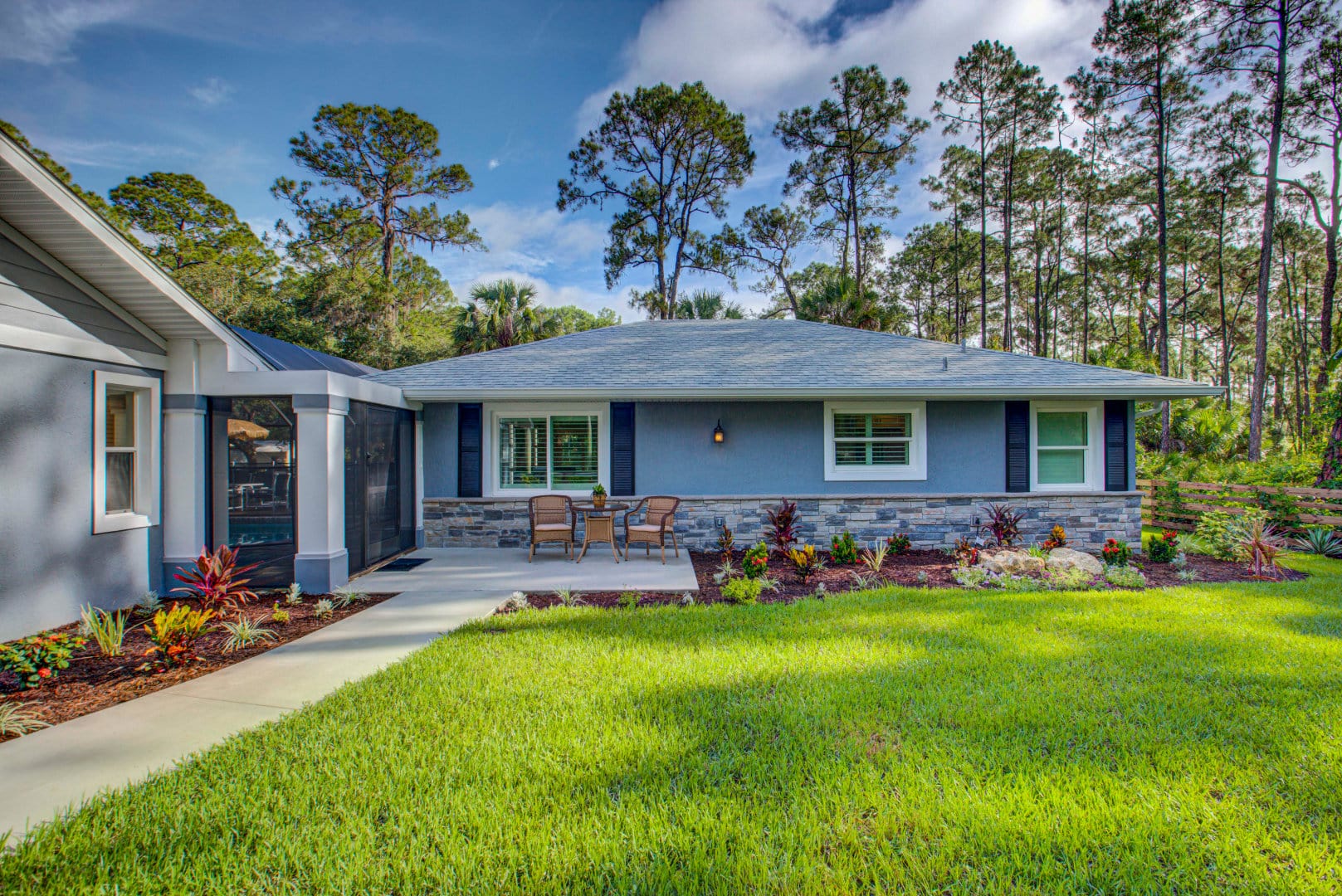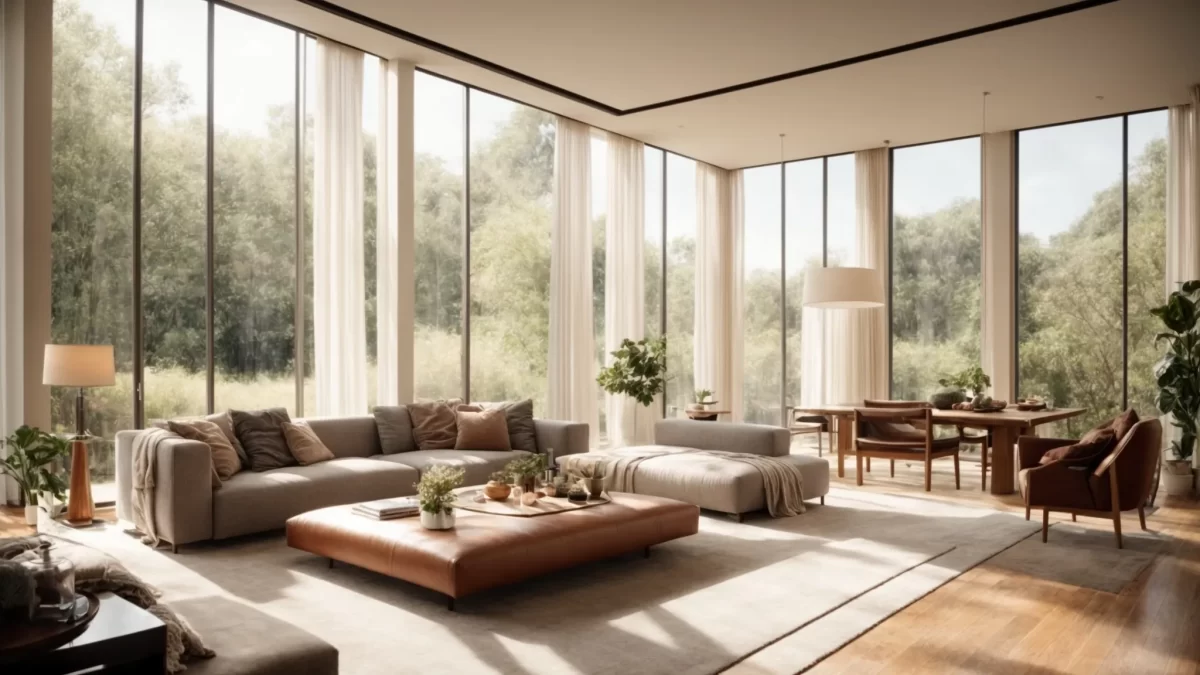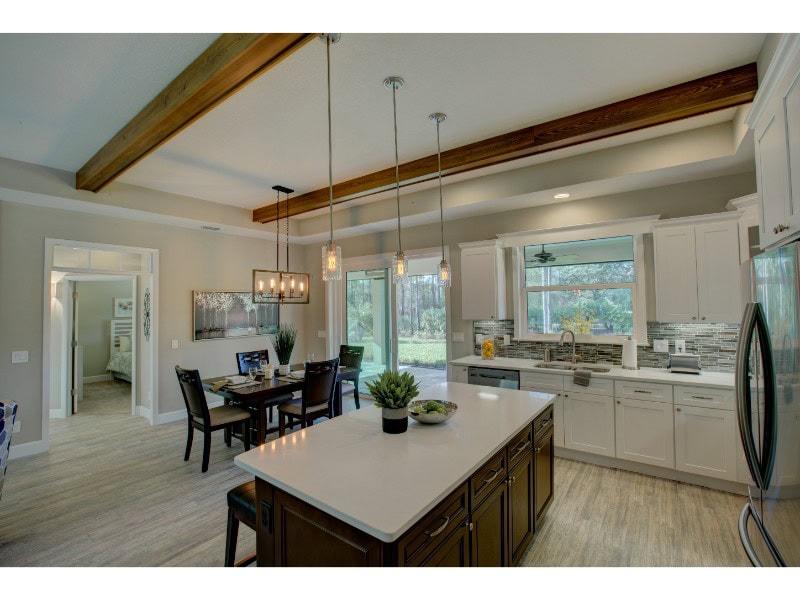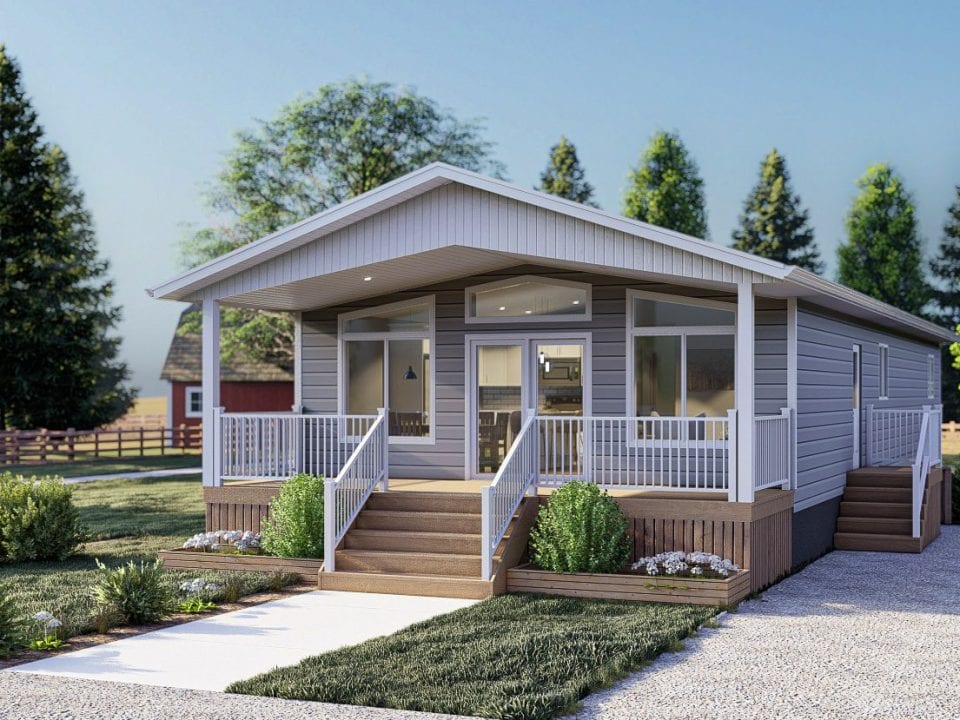
Crafting Your Dream Luxury Home: Essential Design Tips
April 14, 2025
How to Add Value to Your Home with a High-End Garage Design
April 15, 2025Natural light is not just a design element—it’s a powerful tool that can create a healthier, happier, and more inviting living environment. Whether you’re remodeling an existing home or embarking on a custom build, harnessing the potential of natural light can completely transform your space. It can elevate your mood, reduce energy costs, and enhance your interior aesthetics. In this comprehensive guide, we’ll explore strategies and design techniques to help you unlock the full potential of daylight, ensuring that every room in your home radiates warmth and clarity.
Natural light has long been celebrated for its transformative impact on interior spaces. Sunlight illuminates your home and plays a vital role in shaping the ambiance and function of each room. In modern design, abundant natural light is associated with spaciousness, energy efficiency, and improved well-being. During a remodel or custom build, homeowners and designers can make informed design choices that capture and maximize sunlight, ensuring a space that is both beautiful and functional.
This blog post is your comprehensive guide on how to plan, design, and execute a project with natural light in mind. We’ll delve into architectural planning, innovative window solutions, interior design techniques, and the latest sustainable technology—all with the aim of enhancing how light interacts with your home. Whether you’re a seasoned designer or a homeowner eager to refresh your living space, the following insights will empower you to create a bright, welcoming, and energy-efficient home.
Architectural Strategies for Capturing Sunlight
Smart Building Orientation
The structure’s orientation is one of the first decisions in any home remodel or custom build. Positioning your home to take advantage of the sun’s path is critical in maximizing natural light. Consider these tips:
- South-Facing Facades: In the northern hemisphere, south-facing windows receive ample sunlight throughout the day. Designing your living areas—such as the living room, kitchen, and dining area—on the south side can ensure bright, naturally lit spaces.
- Consider Seasonal Variations: While summer provides abundant light, winter sun can be equally valuable for warmth and natural illumination. Use overhangs or awnings to block excessive summer heat while allowing lower-angle winter sun to filter in.
- Utilize Local Climate Data: Consult with architects and use sun-path diagrams for your region. This data can help optimize window placement and size based on seasonal sunlight patterns.
Strategic Window Placement and Design
Windows are the primary conduit for natural light. When planning your remodel or custom build, the type, placement, and design of windows can make a significant difference:
- Large and Unobstructed Windows: Floor-to-ceiling or large picture windows allow more light to flood interior spaces. Avoid unnecessary obstructions, such as heavy trim or excessive mullions, which can reduce the window’s effective area.
- Skylights and Solar Tubes: In areas where traditional windows aren’t feasible—such as interior rooms or spaces with limited wall access—skylights and solar tubes can bring in natural light from above. Modern skylight designs offer energy efficiency, safety features, and excellent insulation.
- Glass Doors and Atriums: Consider incorporating glass doors that open to patios or courtyards. Atriums, open central spaces in a home, can serve as light wells that distribute sunlight evenly throughout the building.
Open Floor Plans
Modern architecture often favors open floor plans to create a sense of spaciousness and fluidity between rooms. By reducing interior walls, you improve sight lines for natural light and allow daylight to penetrate deeper into your home. Here are some ideas:
- Create Visual Continuity: Open layouts remove physical barriers, enabling light to travel unobstructed between spaces. This is particularly effective in smaller homes, where maximizing light can make the space appear larger.
- Functional Zoning: Even in an open plan, use furniture, area rugs, or ceiling treatments to define different areas. This approach allows for flexibility without sacrificing the benefits of an open, light-filled environment.
Interior Design Techniques to Enhance Natural Light
Light-Reflecting Colors and Materials
Color and texture are crucial in amplifying natural light within your home. The right choices can reflect and diffuse sunlight, creating a brighter and more inviting space.
- Neutral and Light Tones: Whites, creams, pastels, and other light hues reflect more sunlight than darker colors. Use these shades on walls, ceilings, and floors to maximize brightness.
- Glossy and Reflective Surfaces: High-gloss finishes, polished floors, and reflective tiles bounce light around the room, enhancing the overall luminosity. Consider accent walls with a subtle sheen or metallic accents that catch the light.
- Mirrors and Reflective Décor: Strategically placed mirrors can amplify natural light by reflecting it into darker areas. Large mirrors near windows or entryways can create an illusion of expanded space and brightness.
Minimalist Window Treatments
Window treatments are essential for controlling glare and privacy, but they should be chosen carefully to maintain the flow of natural light.
- Sheer Curtains and Blinds: Instead of heavy drapes, use sheer fabrics that soften incoming light while keeping spaces bright. Lightweight blinds with adjustable slats offer flexibility without blocking too much sunlight.
- Customizable Solutions: Consider automated or smart window coverings that allow you to control the amount of light entering a room throughout the day. This modern approach can balance privacy with the need for maximum natural illumination.
Interior Layout and Furniture Placement
The arrangement of furniture and interior elements can obstruct or enhance natural light distribution.
- Open Sight Lines: Avoid placing large, bulky furniture directly in front of windows. Choose lower-profile pieces that do not block sunlight, and consider multi-functional furniture that allows for flexible placement.
- Transparent and Translucent Materials: Incorporate glass tables, acrylic chairs, or other translucent pieces that allow light to pass through rather than absorb it. This approach can create an airy, open feeling in any room.
- Light-Diffusing Décor: Use furnishings and décor that complement the light-enhancing theme. For instance, light-colored rugs, airy textiles, and decorative items with reflective surfaces can all contribute to a brighter interior.
Leveraging Technology and Sustainable Solutions
Energy-Efficient Windows and Glazing
Advances in window technology have made it possible to maximize natural light while minimizing energy loss.
- Double or Triple Glazing provides superior insulation, reducing heat loss in winter and heat gain in summer. Energy-efficient windows enhance comfort and contribute to long-term savings on utility bills.
- Low-E Coatings: Windows with low-emissivity (Low-E) coatings can reflect heat into the room during cold weather while keeping it out during the summer. This technology allows you to enjoy the benefits of natural light without compromising energy efficiency.
Smart Home Integration
The rise of smart home technology offers innovative ways to control and optimize natural light in your living spaces.
- Automated Window Treatments: Smart blinds or shades can be programmed to adjust automatically based on the time of day or the intensity of sunlight. These systems can help maintain a comfortable light balance while enhancing energy efficiency.
- Smart Lighting Systems: Integrate natural light with artificial lighting solutions that adjust throughout the day. For example, smart bulbs can mimic natural daylight in the early morning or evening, ensuring a smooth transition as the sun sets.
- Environmental Sensors: Use sensors to monitor light levels, temperature, and humidity. These devices can provide real-time data, allowing you to adjust window coverings or indoor lighting to maintain an optimal environment.
Incorporating Renewable Energy
Maximizing natural light isn’t just about aesthetics and comfort—it can also contribute to a more sustainable lifestyle.
- Solar Panels and Skylights: Consider integrating solar panels into your roof design. Modern solar panels can be efficient and discreet, generating renewable energy while complementing your home’s design.
- Energy-Efficient Appliances: When remodeling or building custom spaces, choose energy-efficient appliances that complement natural light strategies. This holistic approach can reduce your overall carbon footprint and create a more eco-friendly home.
Creative Enhancements for Specific Areas
Maximizing Light in Living Spaces
Living rooms are often the heart of a home, serving as a space for relaxation, entertaining, and family gatherings. Enhancing natural light in these areas can create an inviting and dynamic environment.
- Feature Walls: Light-reflecting artwork or textured panels on walls adjacent to windows add visual interest and help bounce light deeper into the room.
- Layered Lighting: While focusing on natural light, supplementing it with layered artificial lighting (ambient, task, and accent) ensures the space remains welcoming during cloudy days or at night.
Brightening Kitchens and Dining Areas
Kitchens and dining rooms benefit immensely from natural light, making cooking and mealtime more enjoyable.
- Skylights in the Kitchen: Installing a skylight above the cooking area can flood the space with daylight, making it easier to see while preparing meals. This design element can also make the room feel larger and more open.
- Open Shelving and Glass Cabinets: In kitchens, replace dark cabinetry with open shelving or glass-fronted cabinets to create a sense of depth and brightness. These elements allow light to move freely throughout the space.
- Integrated Dining Spaces: For homes with an open concept, consider integrating the dining area with the living space so that natural light flows throughout, creating a cohesive and harmonious environment.
Enhancing Bedrooms and Private Spaces
Bedrooms and personal retreats should be sanctuaries of calm and relaxation. Maximizing natural light in these areas can improve mood, regulate circadian rhythms, and create a peaceful atmosphere.
- Large Windows or French Doors: Expansive windows or French doors installed in bedrooms can provide stunning views and abundant natural light, especially in the morning. This design boosts energy levels and enhances the room’s overall aesthetics.
- Light-Enhancing Decor: Use light colors, minimalistic furniture, and reflective accents in private spaces to create an airy, serene environment. Incorporate natural materials such as bamboo or light woods to maintain a warm, inviting feel.
- Privacy with Light: Frosted or textured glass balances the need for privacy with the desire for natural light. These materials allow daylight to pass through while obscuring direct views, ensuring that personal spaces remain bright and secure.
Maintenance and Future-Proofing Your Light-Filled Home
Regular Upkeep for Windows and Skylights
It is essential to regularly maintain your windows and skylights to keep your home as bright as the day you move in.
- Cleaning Routine: Establish a cleaning schedule for all glass surfaces to remove dust, grime, and environmental deposits that can dull natural light. Clean windows and skylights with appropriate cleaners to maintain maximum clarity.
- Inspect Seals and Frames: Regularly check window seals and frames for any signs of wear or leakage. Addressing these issues promptly ensures that your energy-efficient windows continue to perform at their best.
- Seasonal Adjustments: Adjust window treatments and shading devices with the changing seasons. Regular maintenance and timely upgrades can ensure that your home’s natural lighting strategy remains effective over time.
Planning for Adaptability and Expansion
A home remodel or custom build is a long-term investment. As your family’s needs evolve and technology advances, your approach to natural light may also need to adapt.
- Modular Designs: Consider modular architectural and interior design elements that can be updated or rearranged over time. This flexibility allows you to incorporate new lighting technologies or design trends without a complete overhaul.
- Future-Proofing: Stay informed about emerging trends in energy efficiency and smart home integration. Planning for upgrades and future enhancements during your initial build or remodel ensures that your home remains at the forefront of innovation.
- Documenting and Reviewing: Keep a design journal or portfolio of your lighting strategies and design choices. Periodically review this collection to assess what’s working and might need a refresh, ensuring your home continues to shine.
Maximizing natural light in your home remodel or custom build is a powerful way to enhance your space’s functionality and aesthetics. From smart architectural decisions and strategic window placements to reflective interior design and cutting-edge technology, there are countless ways to harness the power of daylight. By embracing these strategies, you create an energy-efficient and sustainable living environment that is warm, welcoming, and full of life.
As you plan your next remodel or custom build, remember that every decision—from the home’s orientation to the finishing touches on your walls—affects how natural light interacts with your living spaces. With careful planning, creative design, and a commitment to quality, you can build a home bathed in natural light, making every day brighter and more enjoyable.
Embrace the journey of creating a light-filled home where your design choices foster a connection with nature and enhance the quality of life for everyone under your roof. Whether you’re brightening a cozy nook or transforming an entire residence, maximizing natural light offers endless possibilities for innovation and inspiration. Enjoy the process, experiment with new ideas, and look forward to the countless benefits of a home that truly reflects the beauty of natural daylight.

Reese Homes, the award-winning home builder, is passionately devoted to enriching the lives of our clients through the highest quality construction and architectural design. We work hand-in-hand with you and our skilled team to create a partnership that guarantees your home truly expresses your unique personal style.




